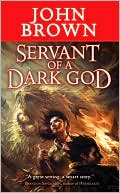Key Conditions for Suspense: Part 18 –
The 3 Phases of Problem Solving for Suspense
by John D. Brown
 The following is part of a continuing series. If you wish to start at the beginning, head to It’s All About The Reader.
The following is part of a continuing series. If you wish to start at the beginning, head to It’s All About The Reader.
Key suspense structure elements
In the last post, I explained that structure and plot are about problem solving. So how do people solve problems? What’s the process?
Well, wait a minute. We have to add a little to that. We’re not just having characters solve problems. We’re showing characters struggle with problems in ways that engender and build suspense in a reader. Then we’re showing them resolve the problem in ways that provide the reader a wash of cathartic relief.
In order to do that, we show our characters work through three phases. I believe all of the elements below are necessary, which means if you take any one of these away, it will prevent the reader from feeling tension, feeling it build, or feeling it release.
1. PRESENT the problem
In this phase, a reader must:
- Understand what the problem is, i.e. the negative and positive possibilities
- See a sympathetic and interesting character
- Understand and buy into why the character can’t or won’t walk away from the problem
- Be surprised by some of the particularities of the character and problem
2. Main character STRUGGLES to solve the problem
In this phase, a reader must:
- Understand the actions the character is going to take and why the character is taking them
- Have reasons to worry, e.g. see actions unexpectedly thwarted and troubles increase
- Have reasons to hope, e.g. see some actions succeed
- See the character locked into an attempt to solve the problem that will be final
- Be surprised by some of the particularities of the motives, decisions, actions, and results
3. Main character RESOLVES the problem
In this phase, a reader must:
- See whether the character succeeds or fails. For suspense, the character usually snatches victory from the jaws of defeat
- Understand what the success or failure means for the character’s life going forward
- Be surprised by some of the particularities of the resolution
We present the problem and why the character must face it. This raises possibilities in the reader’s mind, good and bad, for the character. Because the reader finds the character sympathetic and interesting, the reader will automatically root for the character to win.
We share with the reader how the character plans to solve the issue. Then we show how those plans keep getting thwarted and how people and events are combining against them. This raises reader fears. We show other actions succeed. This raises reader hopes that the character still might win. At some point the character is locked into a final attempt.
As the main character struggles this last time, it looks like she is going to lose. Then we show her snatch victory from the jaws of defeat. This produces a wonderful wash of relief in the reader. Of course, if you’re writing a tragedy, you’ll flip those.
Along every step of the way, readers need to be surprised, not about everything, but about enough of the particularities of the problem, character, actions, reactions, and resolution that it prevents the reader from knowing what WILL happen. Instead, these unexpected things allow the reader to know what MIGHT happen and worry about the possibilities.
Not the three-act structure
I know some of you are thinking—hey, that’s the three act structure. It’s true some people describe the three acts in a similar way. But I have tried very hard to avoid the word “act.”
First, an act is simply a major division of a story. A part. And it’s somewhat arbitrary how those divisions are made. Because of this, the structure above might describe stories with one, three, five, seven, or more acts.
Second, “act” doesn’t tell you what you as the writer are trying to accomplish. It’s a form term that carries little useful information, and in fact, sometimes obfuscates what you’re actually trying to do.
Third, “three-act structure” is too often used in rigid forms, a lot of them originating in Hollywood, that prescribe certain proportions, obstacle types, and event sequences. It’s all focused on form outside of the context of any function, and that’s precisely what I’m trying to avoid.
So I prefer not to talk about acts, but phases of problem solving. This helps me keep clear what my goals are and reminds me of my many options.
Of course, the three phases constitute a very broad structure. They still need a bit more detail in order to be translated into the events and scenes of a specific story. But before we move into that topic, I want to take a moment to talk about how critical it is to think about patterns and options. And I’ll do that in the next post.
Happiness,
John
•••
 John Brown is an award-winning novelist and short story writer. Servant of a Dark God, the first book in his epic fantasy series, was published by Tor Books and is now out in paperback. Forthcoming novels in the series include Curse of a Dark God and Dark God’s Glory. He currently lives with his wife and four daughters in the hinterlands of Utah where one encounters much fresh air, many good-hearted ranchers, and an occasional wolf.
John Brown is an award-winning novelist and short story writer. Servant of a Dark God, the first book in his epic fantasy series, was published by Tor Books and is now out in paperback. Forthcoming novels in the series include Curse of a Dark God and Dark God’s Glory. He currently lives with his wife and four daughters in the hinterlands of Utah where one encounters much fresh air, many good-hearted ranchers, and an occasional wolf.
For a list of all of the posts in this series thus far, click on the “John D. Brown” tag.


